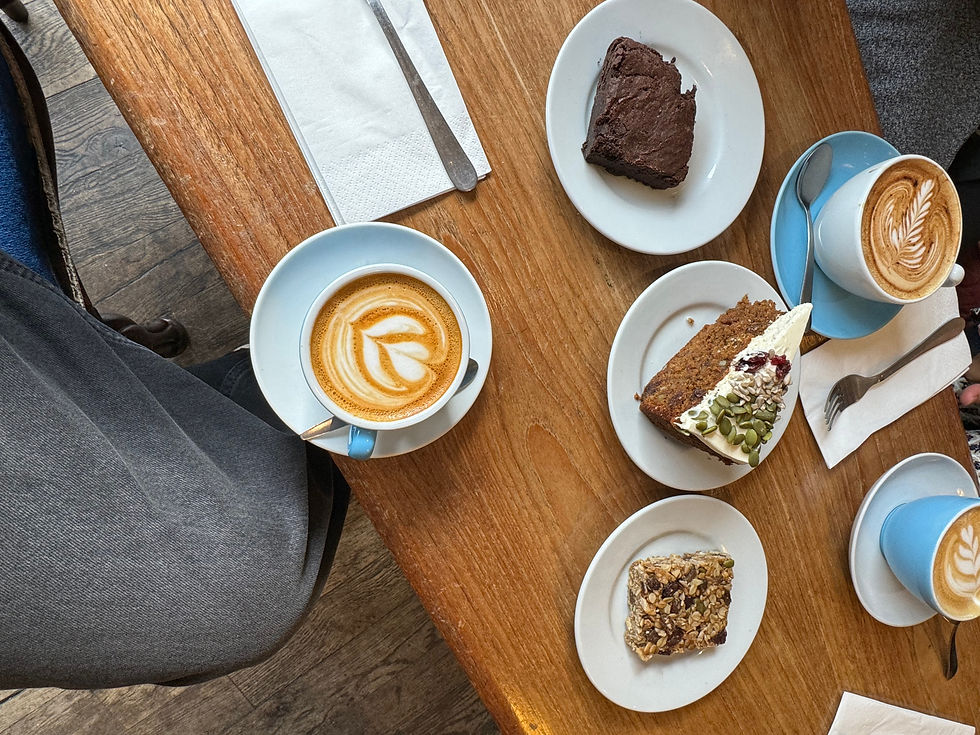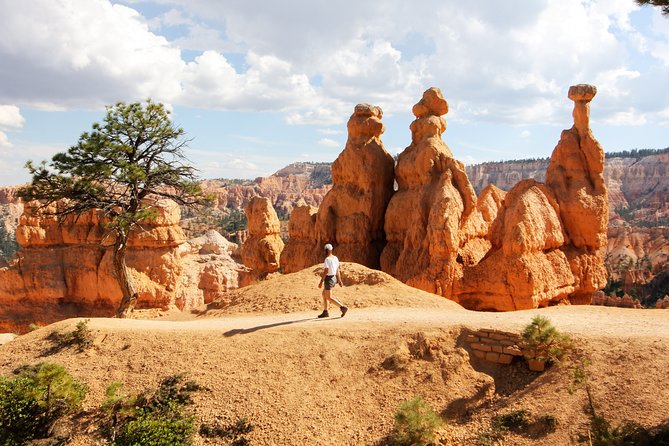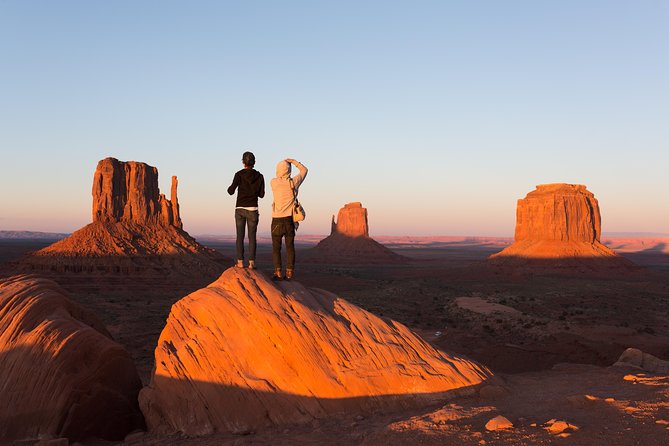Exploring Bryce Canyon: Trails, Sunset Views & Tips for Your Visit
- makoklu33
- Oct 7, 2024
- 5 min read
Updated: Sep 6
This is another canyon I visited on my trip—Bryce Canyon National Park, located in southern UT—and I made a lovely loop while I was there, capturing some amazing shots. Watching the sunset at Sunset Point is truly spectacular! The elevation adds a crispness to the air that makes the views feel even more breathtaking. Similar to Zion, I wasn’t able to hike all the trails due to the winter weather, but the beauty of the canyon still shines through year-round.
Before heading out, I stopped by the visitor's center to get a map and some tips, and I also browsed the gift shop for a fun souvenir. There’s a shuttle system available during peak months, which is super helpful if you're traveling in RVs or just want to avoid parking hassles. If you're coming from the nearby town of Tropic, it’s a quick and scenic drive.
Planning a vacation here? Be sure to check the park fees and see if you need a reservation for camping or special programs. Next, I’ll walk you through the highlights of my visit and suggest some must-see spots to add to your list!

Why Visit Bryce Canyon?
Unique Geology: Bryce Canyon is known for its distinctive hoodoo rock formations, which are unlike any other in the world. The combination of natural beauty and geological significance makes it a must-see.
Stargazing: The park is recognized as a Dark Sky Park, making it an ideal location for stargazing. The clear night skies reveal countless stars and the Milky Way.
Diverse Trails: There are trails for all skill levels, from easy strolls to challenging hikes. Each trail offers different perspectives and experiences of the canyon's beauty.
Best Time to Visit Bryce Canyon
Spring (March to May)
Mild Weather: Temperatures start to warm up, making it comfortable for hiking and exploring.
Wildflowers: The park begins to bloom with wildflowers, adding vibrant colors to the landscape.
Fewer Crowds: Early spring, especially March and April, sees fewer visitors compared to the summer months.
Fall (September to October)
Cooler Temperatures: Perfect for outdoor activities, with crisp air and stunning views.
Autumn Foliage: The changing leaves create a beautiful contrast with the red rock formations.
Less Crowded: After Labor Day, crowds begin to thin out, allowing for a more peaceful experience.
Worst Time to Visit Bryce Canyon
Summer (June to August)
High Temperatures: While temperatures are generally warm, daytime heat can be intense, reaching the 80s and 90s°F (27-37°C).
Crowded: Summer is peak tourist season, leading to larger crowds and longer wait times at popular viewpoints and trails.
Winter (December to February)
Cold and Snowy: While winter can be beautiful with snow-covered hoodoos, temperatures often drop below freezing, making some trails less accessible.
Limited Accessibility: Snow and ice can affect road access and trail conditions, which may limit your hiking options.
Queen's Garden Trail
I hiked the Queen's Garden Trail and part of the Navajo Loop, which together cover about 2.8 miles. This trail is ideal for families, offering relatively easy terrain with stunning scenery. As you descend into the canyon, you’ll be surrounded by unique hoodoo formations and vibrant colors that change with the light. The trail provides excellent opportunities for photography, especially in the morning when the sun illuminates the rock formations.
The Queen's Garden Trail is often considered one of the best ways to experience the beauty of Bryce Canyon, and it can be combined with other trails for a longer adventure.
Bryce Point
Bryce Point offers one of the most breathtaking panoramic views of the entire canyon. It's an excellent spot for watching the sunset, as the changing light creates a magical atmosphere with hues of orange, pink, and purple reflecting off the hoodoos. The overlook is easily accessible, making it a great choice for visitors of all ages.
Other Locations to Consider
I wasn't able to visit these locations because of weather or I didn't have a time to visit it. I did part of the peek a boo loop and loved it so if you have extra time I would definitely recommend that one.
Inspiration Point: Another stunning viewpoint that offers fantastic views of the Bryce Amphitheater. It's a great spot for sunrise and sunset.
Peek-a-boo Loop: This 3-mile loop trail is more strenuous but takes you closer to the hoodoos for a more intimate experience. It’s perfect for those looking for a bit more adventure.
Mossy Cave: Located outside the main park area, this short trail leads to a unique cave and a waterfall, making it a nice addition to your visit.
FAQ – Bryce Canyon National Park
1. How was Bryce Canyon formed?
Bryce Canyon, located in southern Utah, was shaped over millions of years by wind, water, and ice. That’s what carved out those wild and twisty hoodoo rock towers that make this place so unique—there’s nothing else quite like it in America!
2. Where to stay when visiting Bryce Canyon?
You’ve got some great options nearby! Bryce Canyon City is right next to the park entrance, super convenient if you want to roll out of bed and straight onto a trail. The small town of Tropic is also nearby and has a cozy, local vibe. Some guests even stay near Red Canyon or plan their visit as part of a road trip between Zion National Park and Bryce.
3. How big is Bryce Canyon?
The park covers about 56 square miles. It’s not the biggest, but it packs in a ton of beauty with amazing viewpoints, trails, and photo ops everywhere you turn.
4. How old is Bryce Canyon?
The rock formations in the park are around 60 million years old, though the canyon itself started forming somewhere between 15 and 20 million years ago. It's like stepping into a prehistoric landscape!
5. Is Bryce or Zion better?
Hard to pick! Zion National Park is more dramatic, with towering canyon walls and hikes like Angels Landing. Bryce Canyon is higher in elevation, cooler, and filled with colorful hoodoos and epic sunrise views. Honestly, if you’ve got the time, visit both—they're two of Utah’s top national parks and super close to each other.
6. Is the drive from Zion to Bryce scary?
Not really! It’s actually a beautiful, scenic drive. There are a few curvy spots and some elevation changes, but nothing too intense. A lot of folks stop at Red Canyon along the way—it’s like a mini Bryce and a great place for a quick photo or hike.
7. How do I get around Bryce Canyon?
During busy months, the Bryce Canyon shuttle is the way to go. It loops around the major stops so you can just hop on and off without stressing about parking. Super handy, especially if you're visiting in an RV or during peak season.
8. Where is the Bryce Canyon Visitor’s Center?
Right near the park entrance! It’s a perfect first stop—grab a map, ask the rangers about trail conditions, or pick up a souvenir at the gift shop. The rangers also offer tips on where to go based on the weather and your hiking style.
9. What’s the entrance fee for Bryce Canyon?
The park entrance fee is usually around $35 per car for a 7-day pass. But if you’re planning to visit other spots like Zion National Park or other U.S. parks, grab the America the Beautiful Annual Pass for $80—it’ll save you money and let you breeze through entrance stations.
10. Can I visit Bryce Canyon from Las Vegas?
Totally! Bryce Canyon is about a 4-hour drive from Las Vegas, so it’s doable as a long day trip—but staying overnight gives you more time to soak it all in. A lot of visitors pair it with a loop that includes Zion, Bryce, and maybe even Capitol Reef or Arches if you’re on a bigger Utah road trip.





























Comments